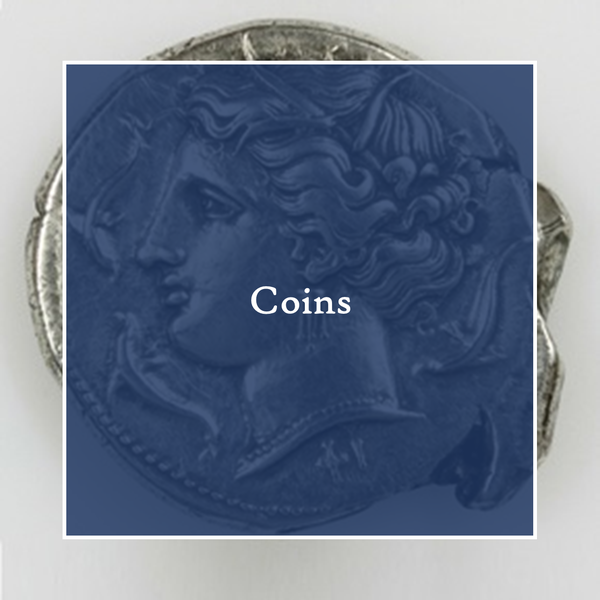Coins
|
Holdings and their history The coin collection is one of the oldest parts of the Collection of Classical Antiquities. Its beginnings date back to the early 18th century. When the eminent classical scholar Friedrich Gottlieb Welcker became professor of Greek Literature and Archaeology at the University of Giessen in 1809, a small collection of around 500 coins already existed. This collection was expanded, especially around the middle of the 19th century, by Johann Valentin Adrian (1793-1864), the first director of the collection, which was renamed "Kunst-, Münzen- und Antikenkabinett" (Cabinet of Art, Coins and Antiquities) in 1835, through extensive purchases from important collections. Our collection currently comprises around 4,100 coins. In terms of content, the coin collection covers a broad spectrum that provides a good overview of all facets of ancient coinage. Coins of various Greek city states and Magna Graecia are represented as well as coinage of Hellenistic rulers and Roman emperors up to coins of the Celts and Iberians.
Coins as archaeological objects Coins are a special type of object and provide a great deal of information. They not only provide information about the ancient payment system, wage and property relations of different social classes, trade contacts or trade routes, but are also important in terms of their images. The choice of different images on the obverse and reverse has always been used to visualise the self-conception of the commissioner and to convey ideological or cultural-historical messages. The images on the coins are accordingly diverse: depictions of gods, heroes and personifications, famous monuments, portraits of reigning rulers and their deeds as well as political propaganda.
|
|

